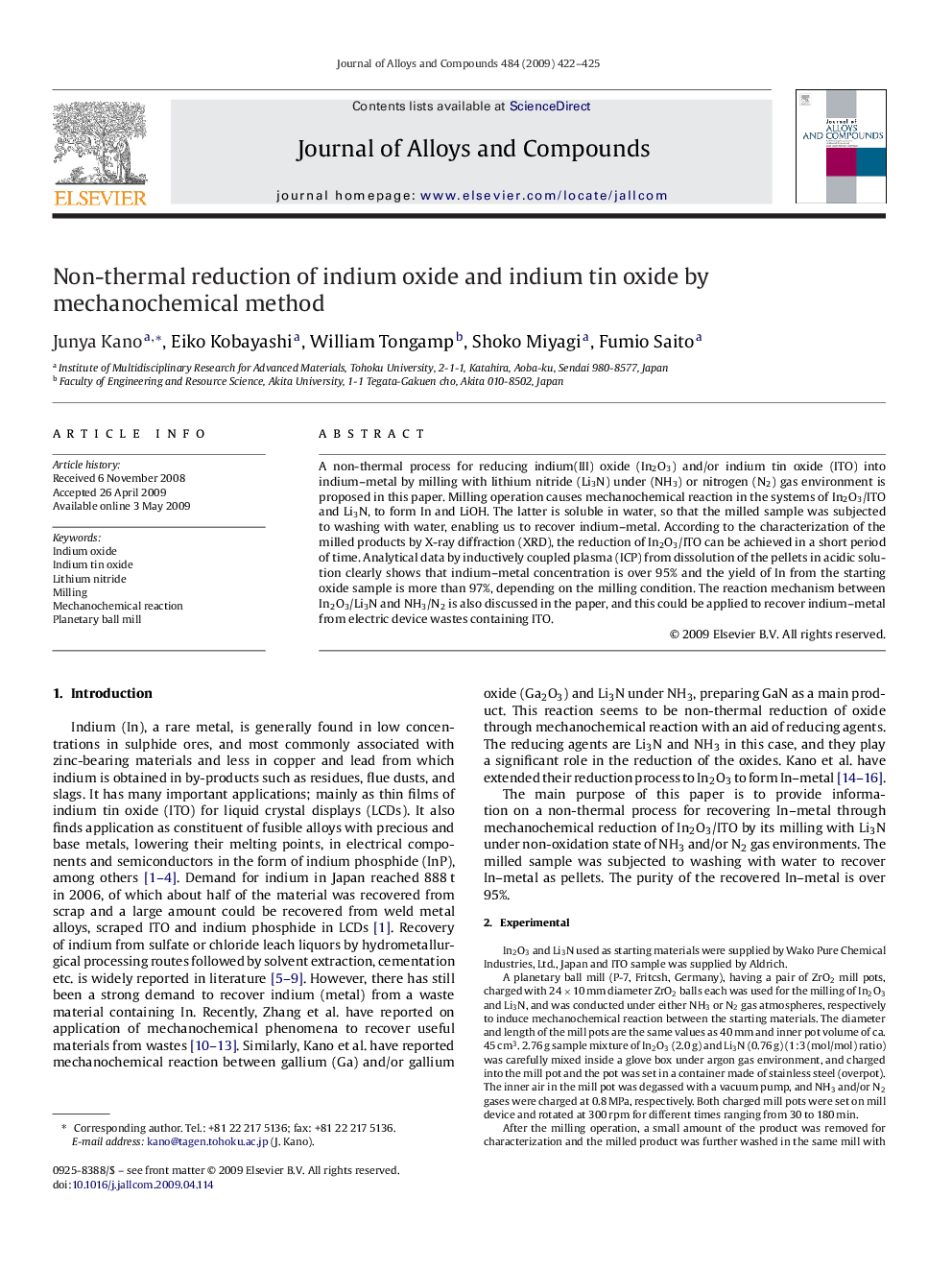| Article ID | Journal | Published Year | Pages | File Type |
|---|---|---|---|---|
| 1621333 | Journal of Alloys and Compounds | 2009 | 4 Pages |
A non-thermal process for reducing indium(III) oxide (In2O3) and/or indium tin oxide (ITO) into indium–metal by milling with lithium nitride (Li3N) under (NH3) or nitrogen (N2) gas environment is proposed in this paper. Milling operation causes mechanochemical reaction in the systems of In2O3/ITO and Li3N, to form In and LiOH. The latter is soluble in water, so that the milled sample was subjected to washing with water, enabling us to recover indium–metal. According to the characterization of the milled products by X-ray diffraction (XRD), the reduction of In2O3/ITO can be achieved in a short period of time. Analytical data by inductively coupled plasma (ICP) from dissolution of the pellets in acidic solution clearly shows that indium–metal concentration is over 95% and the yield of In from the starting oxide sample is more than 97%, depending on the milling condition. The reaction mechanism between In2O3/Li3N and NH3/N2 is also discussed in the paper, and this could be applied to recover indium–metal from electric device wastes containing ITO.
